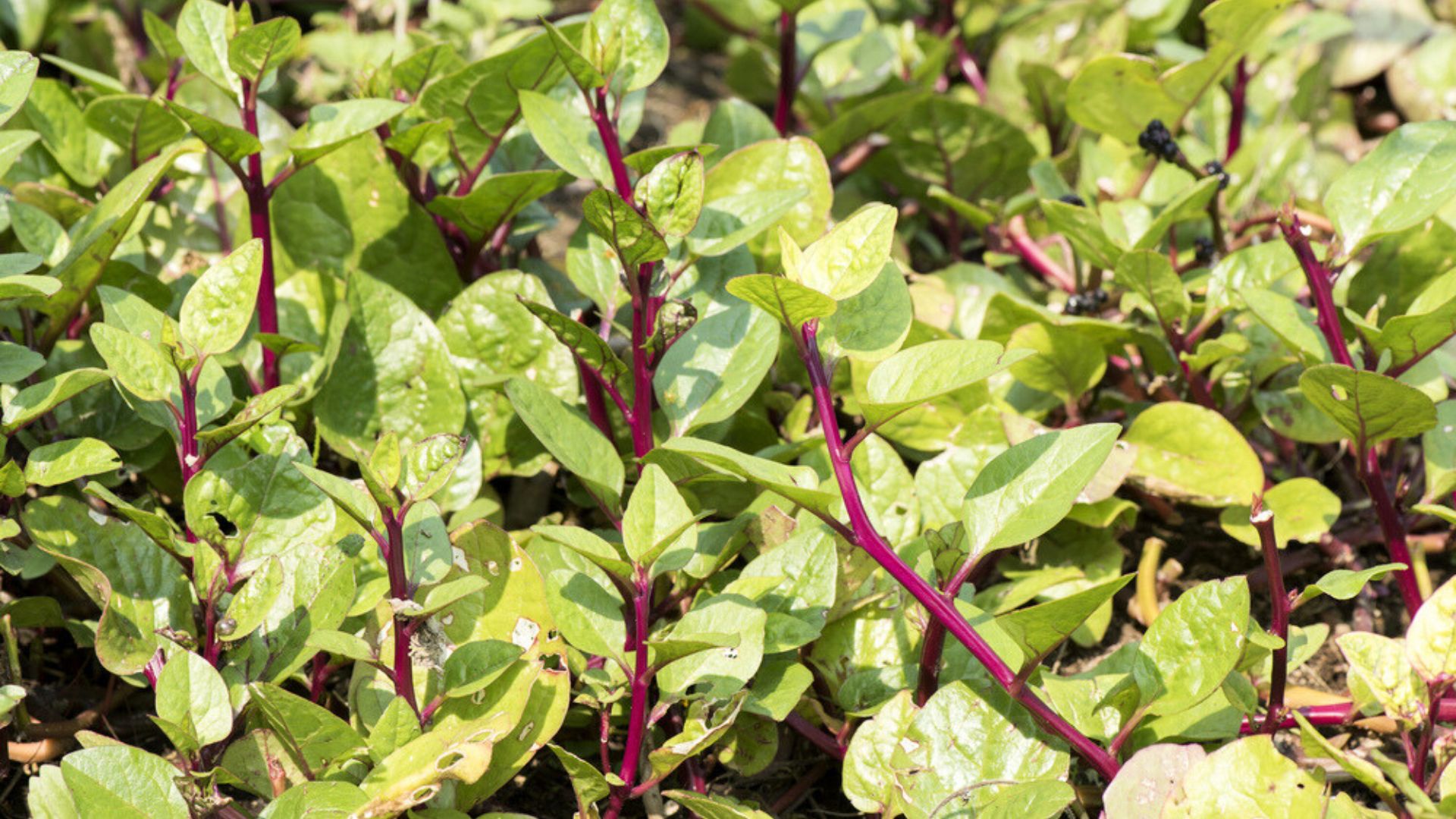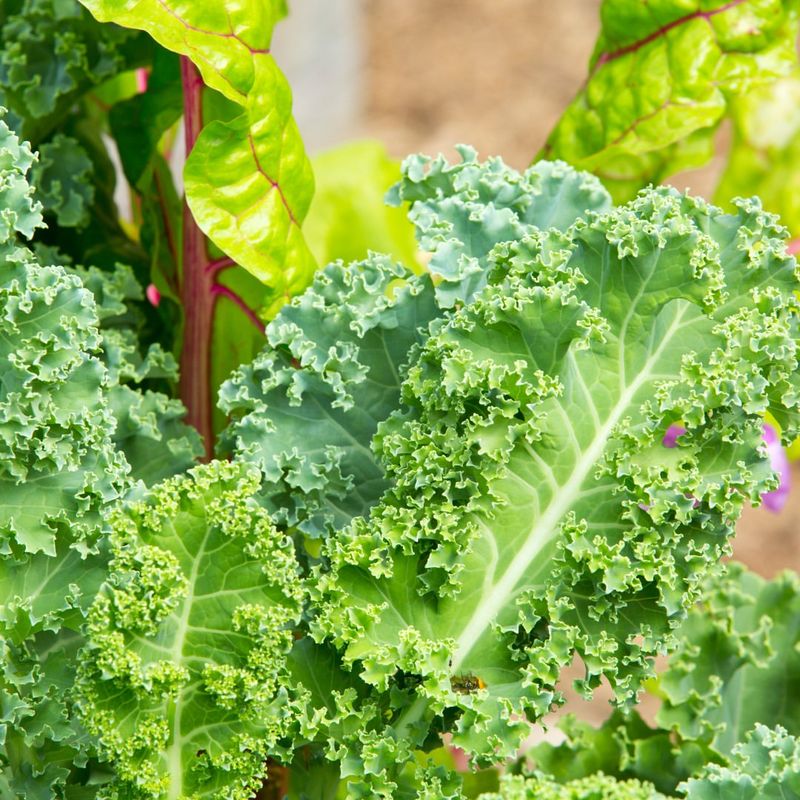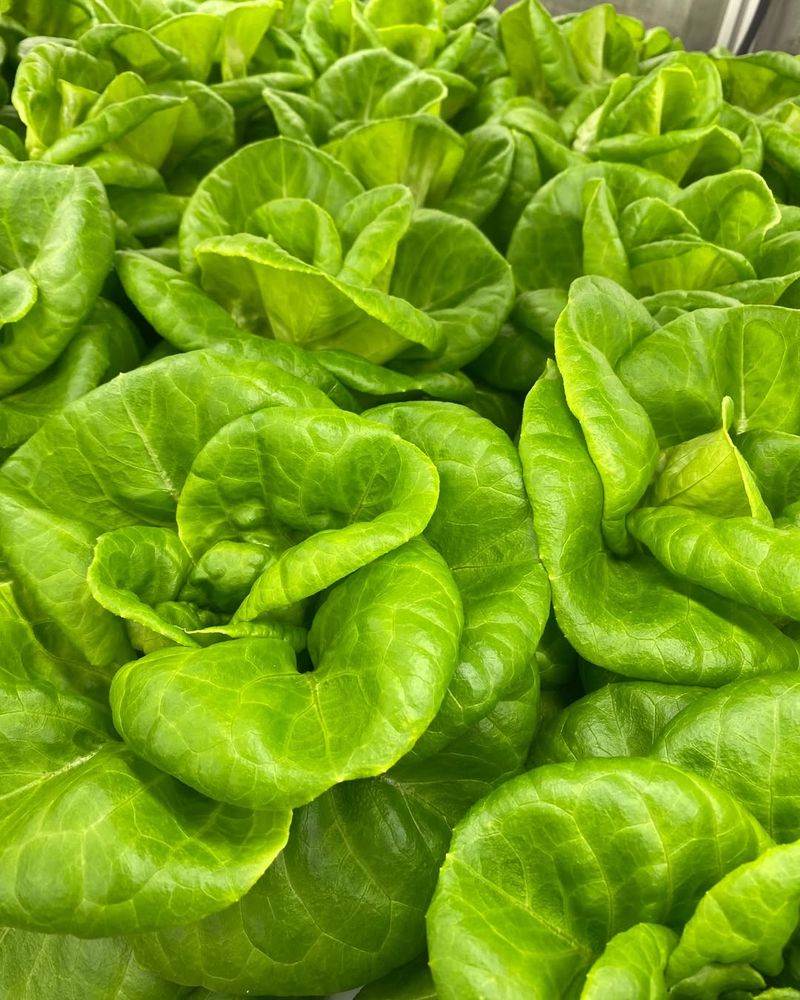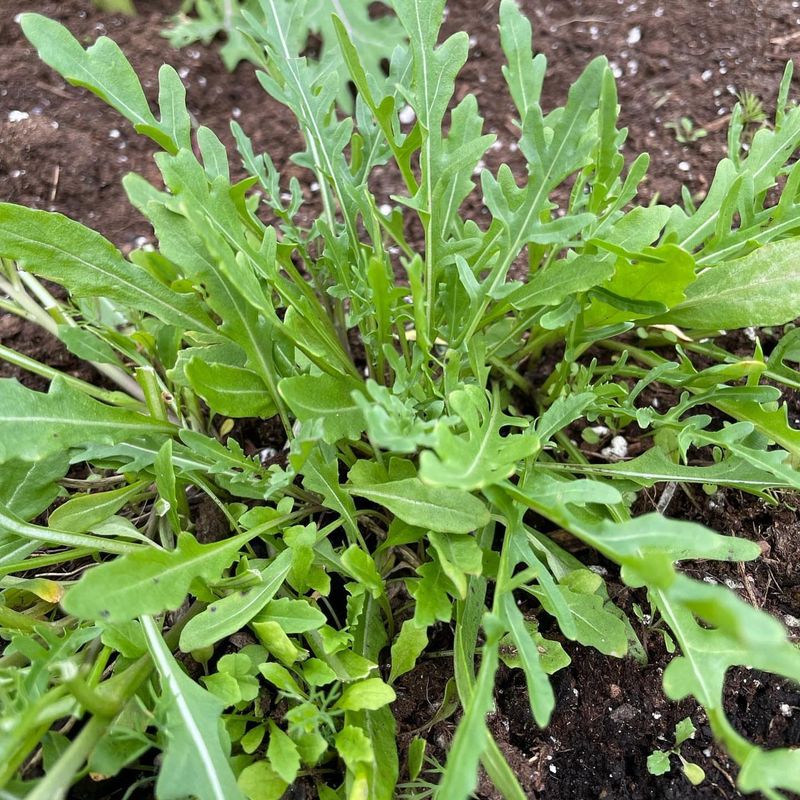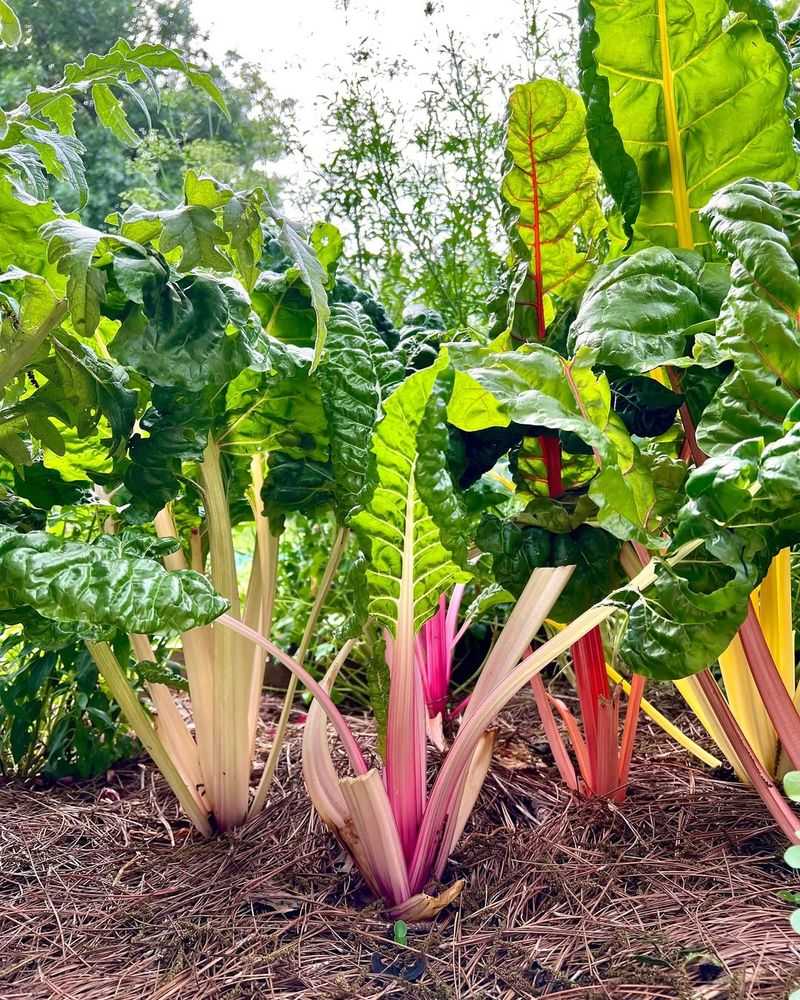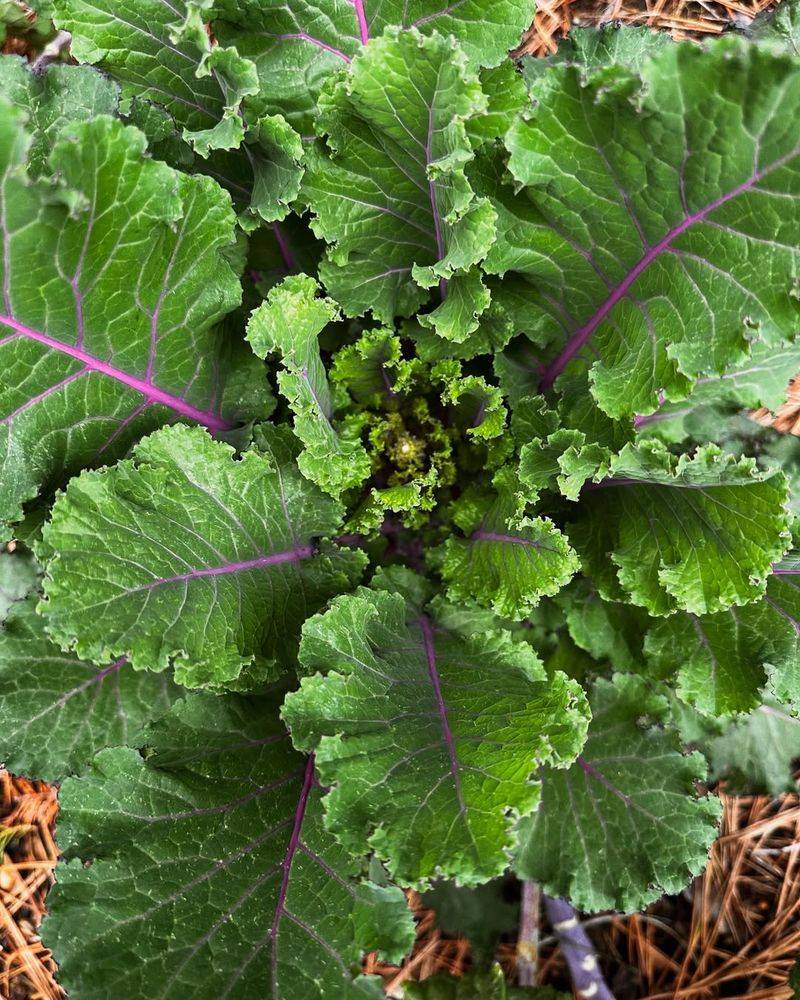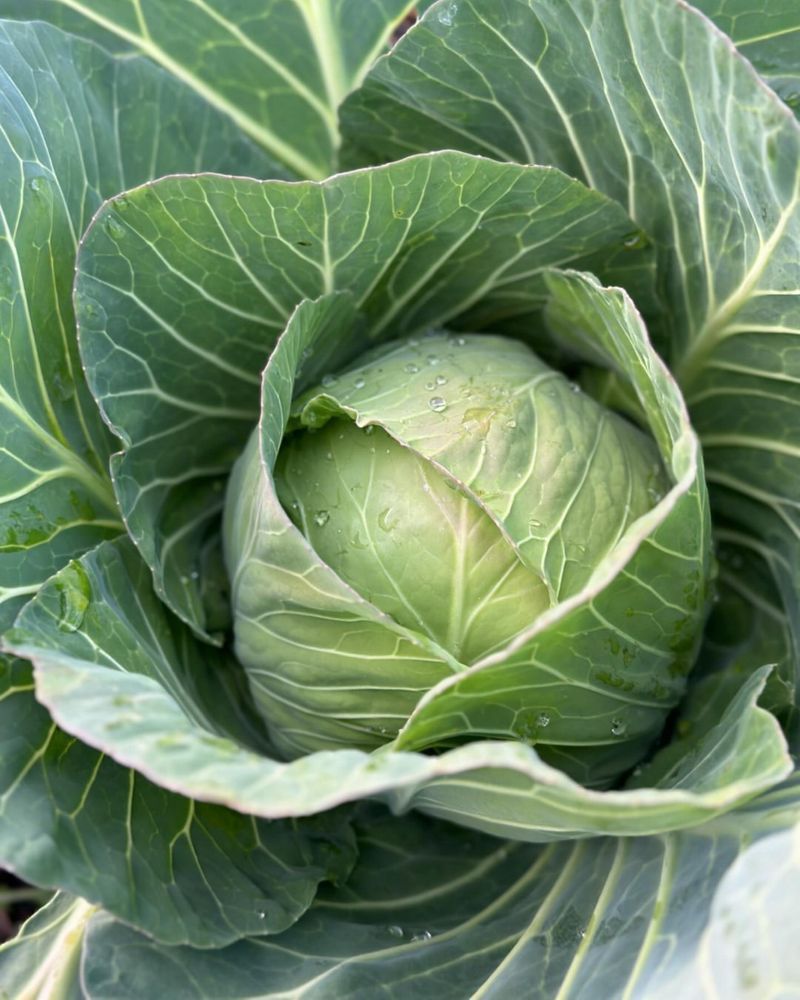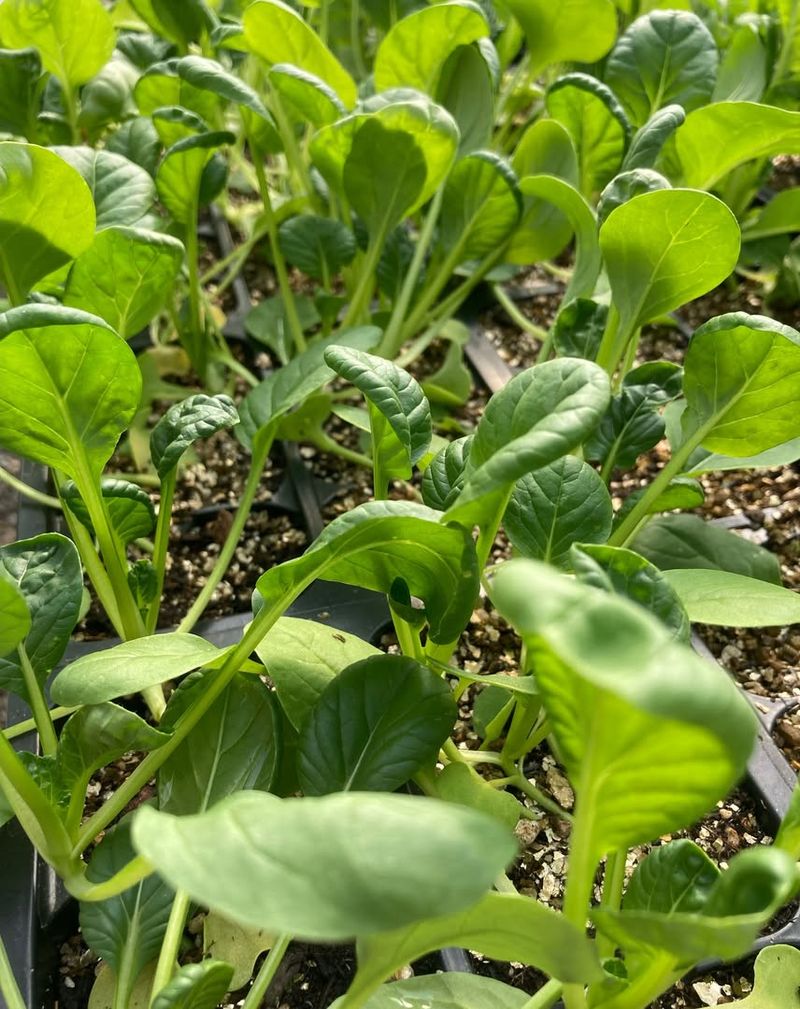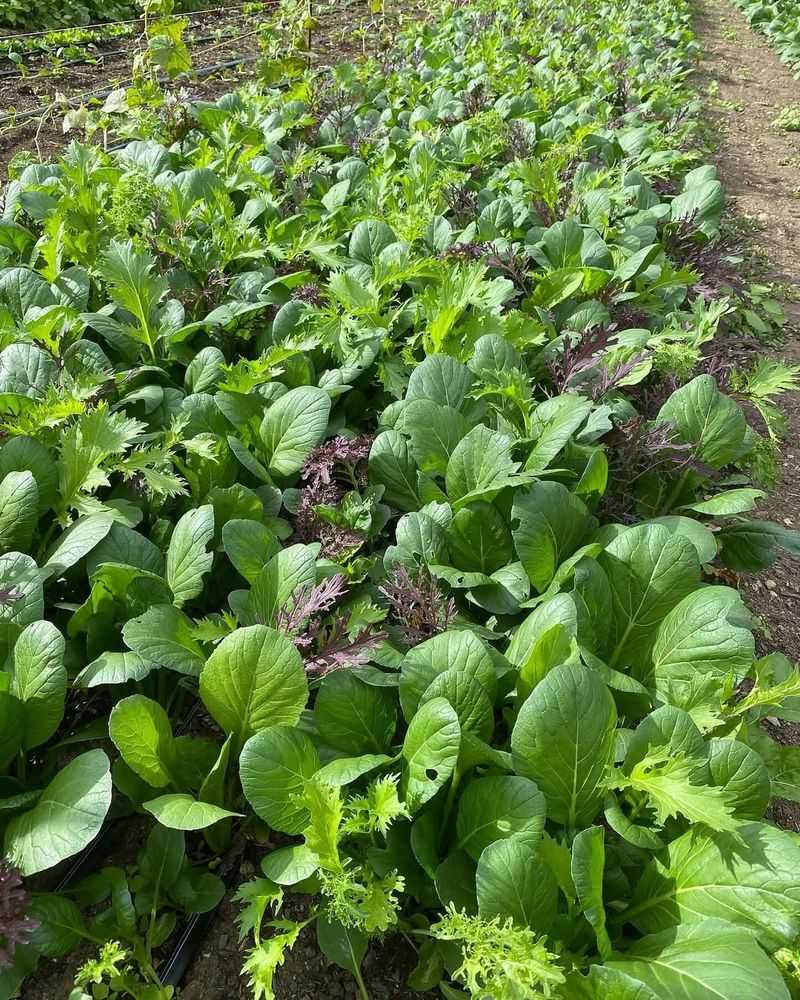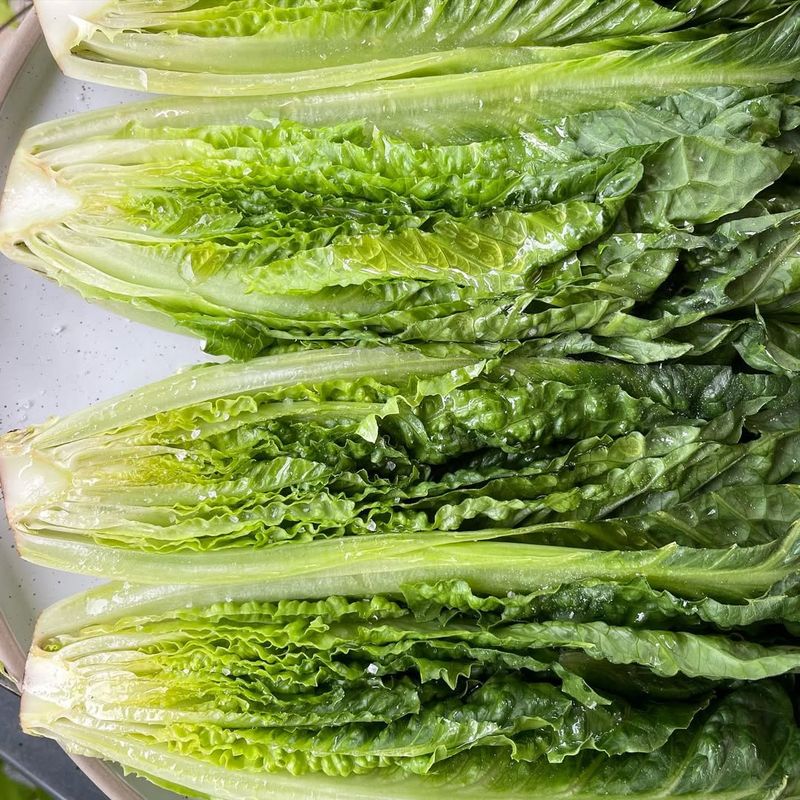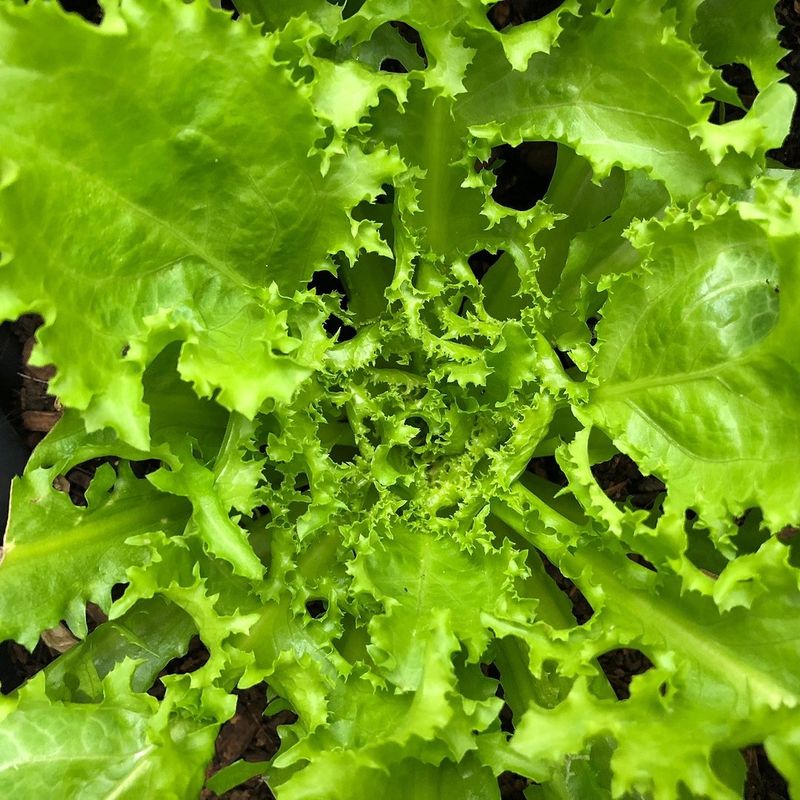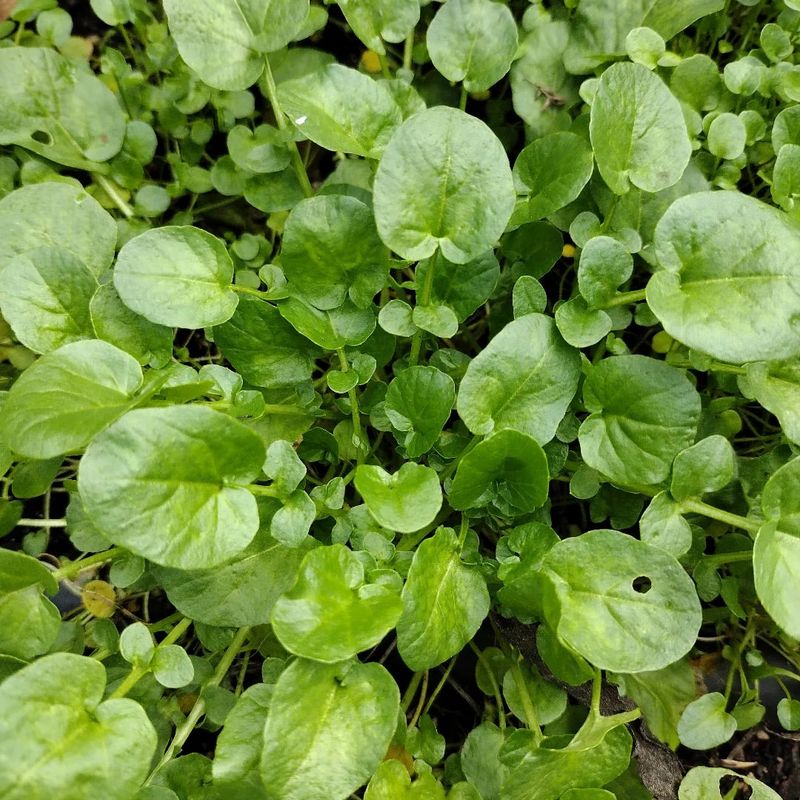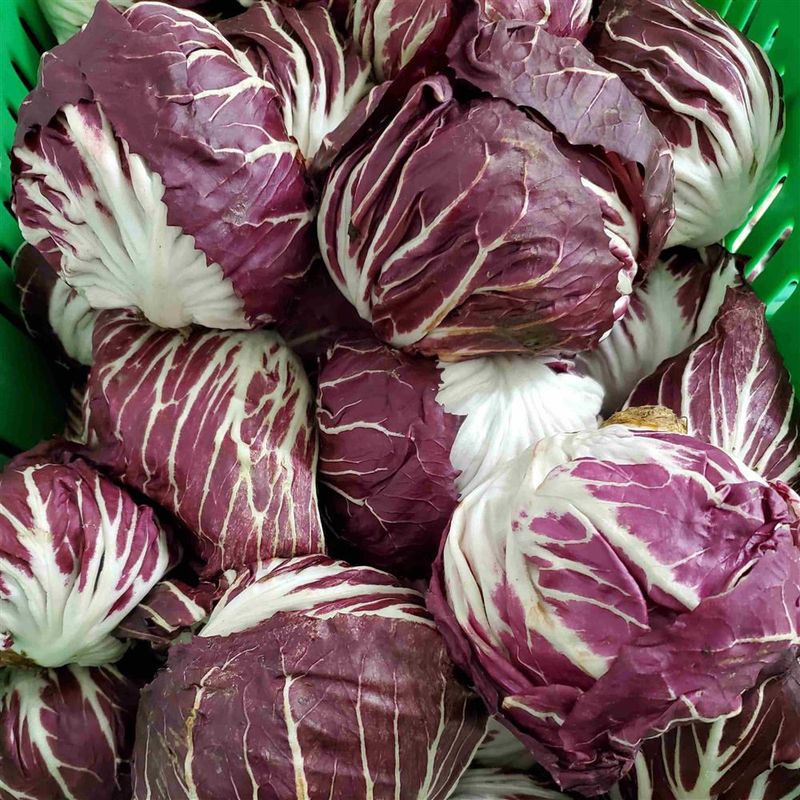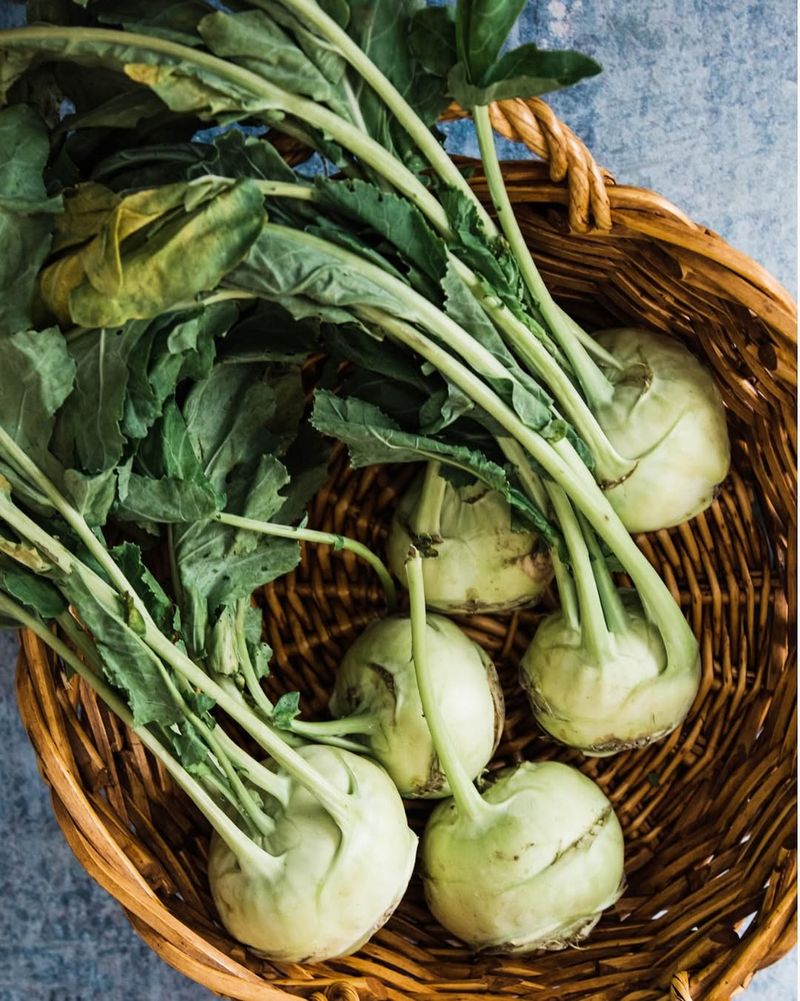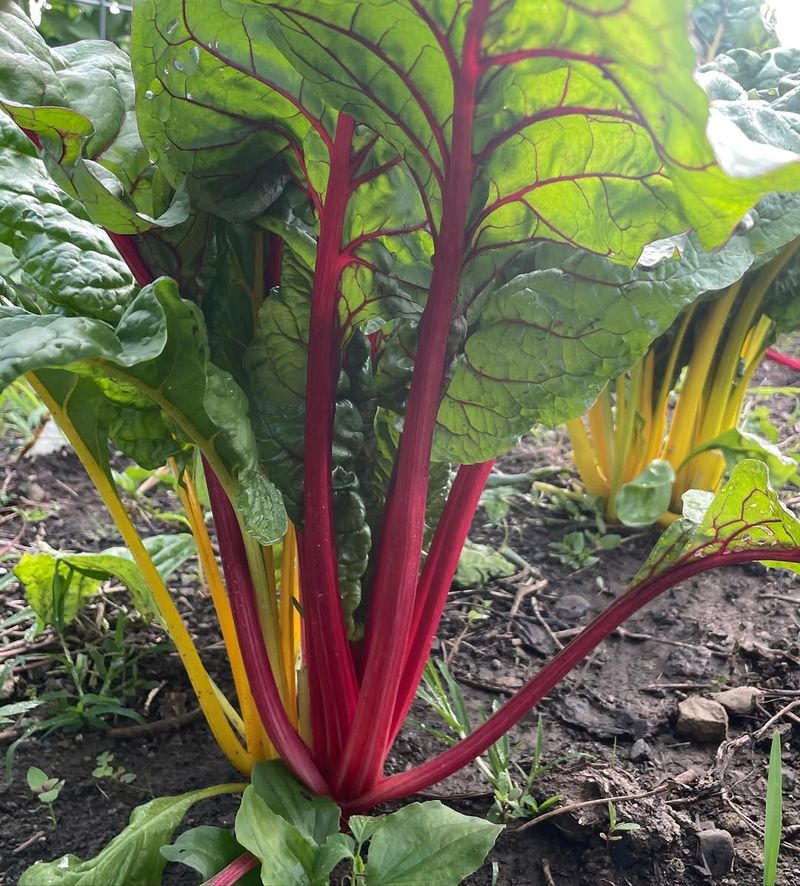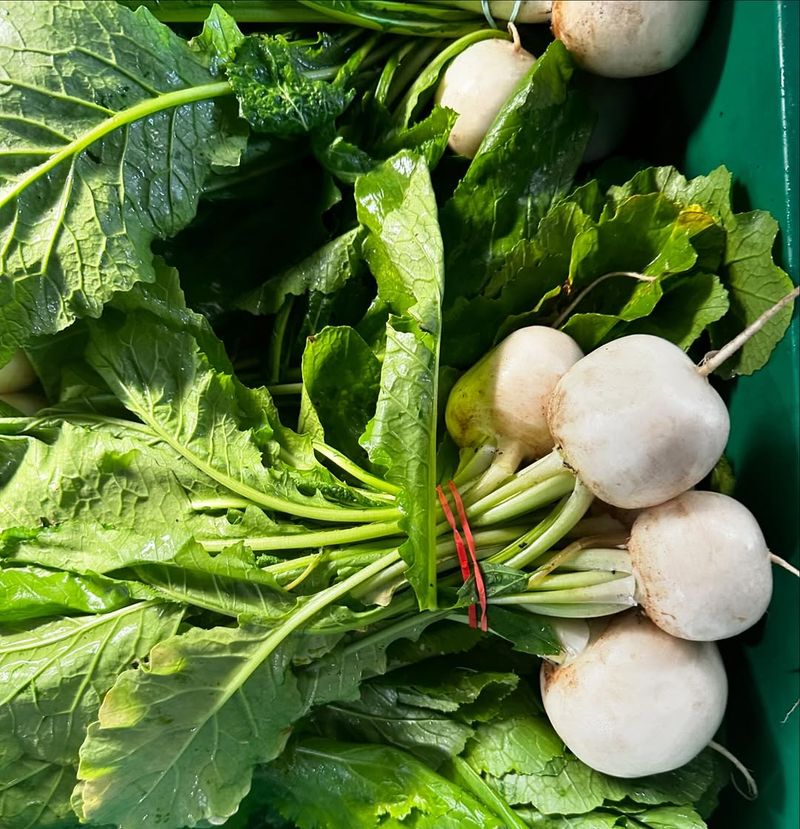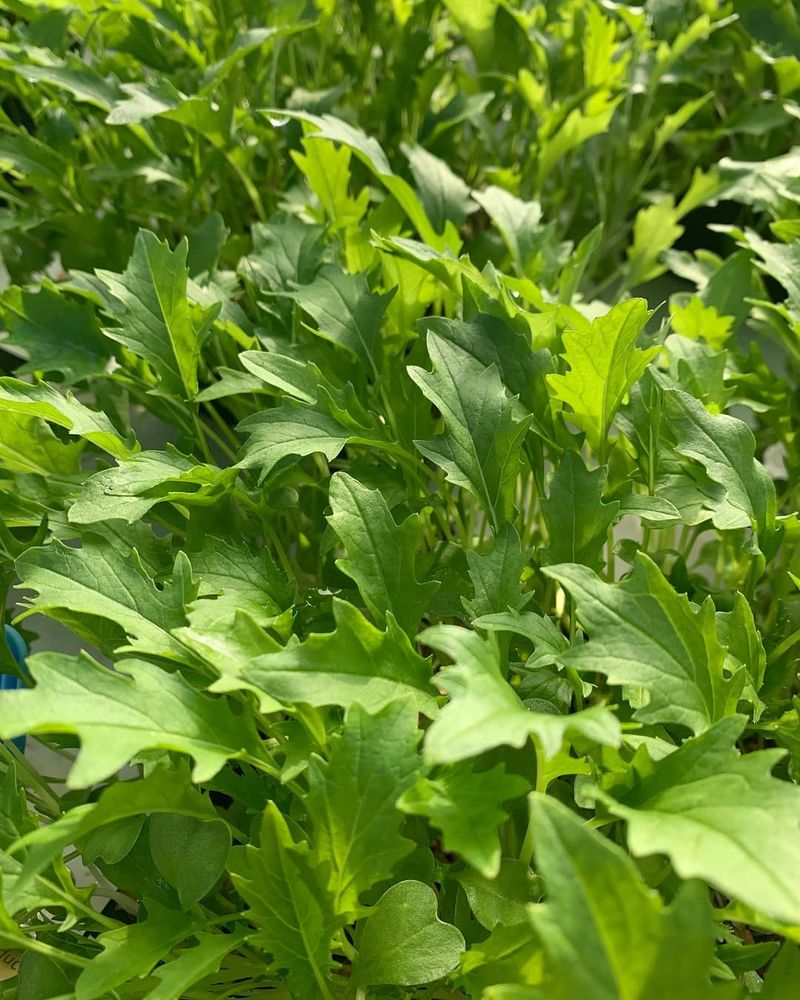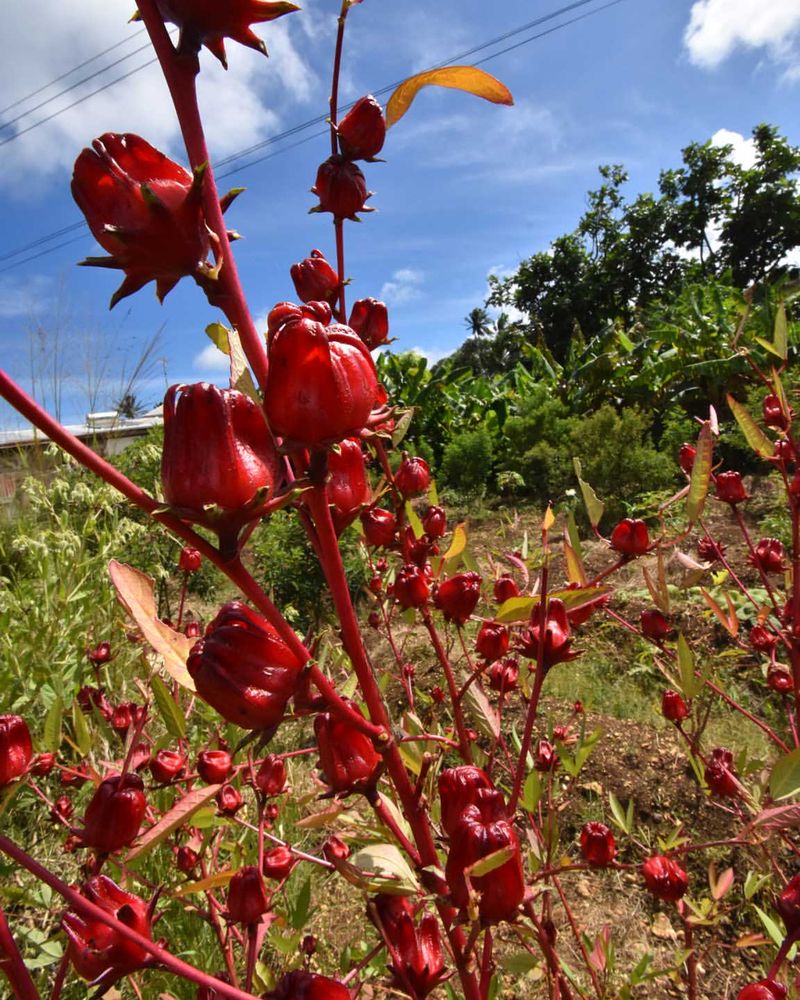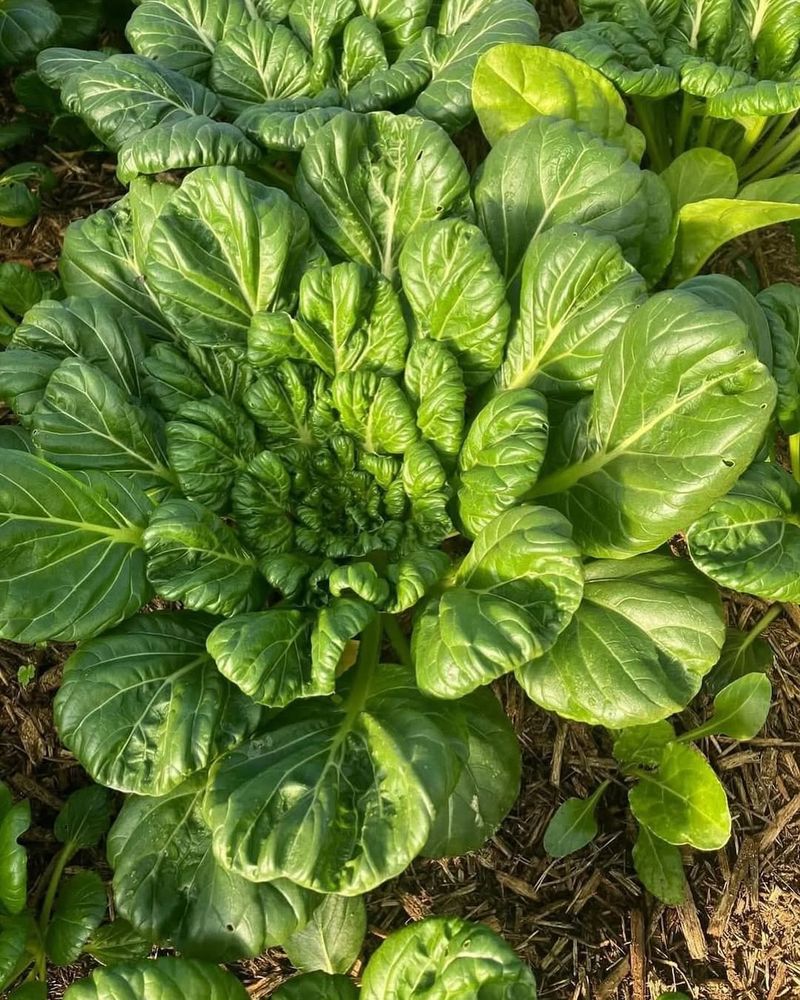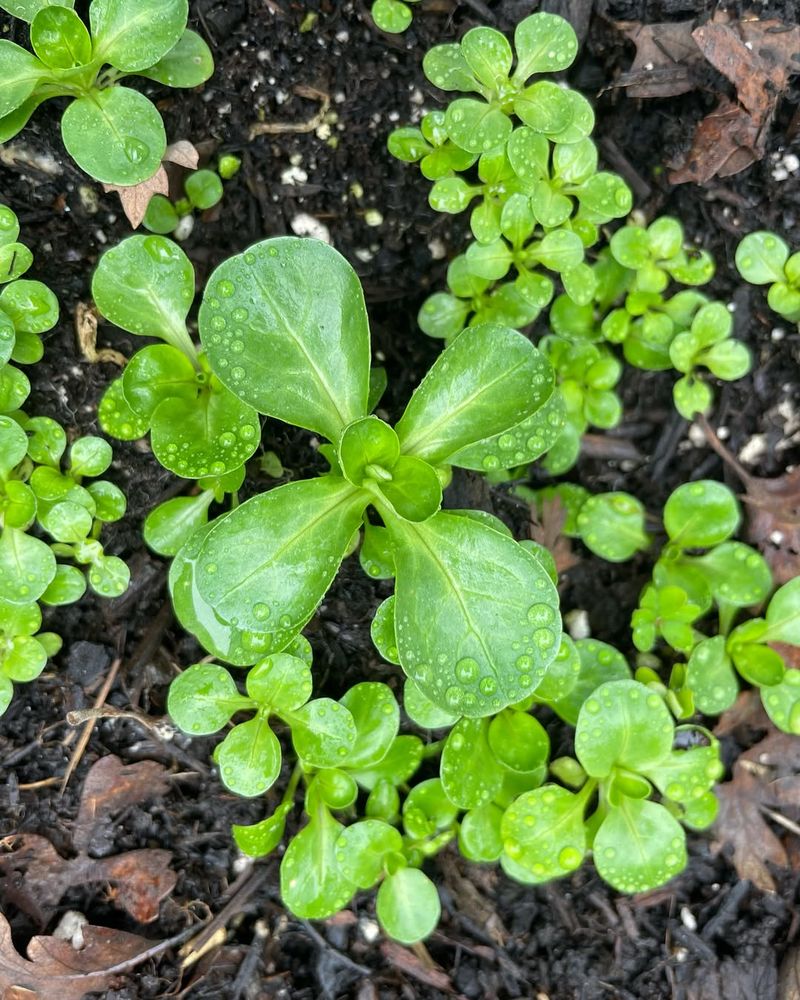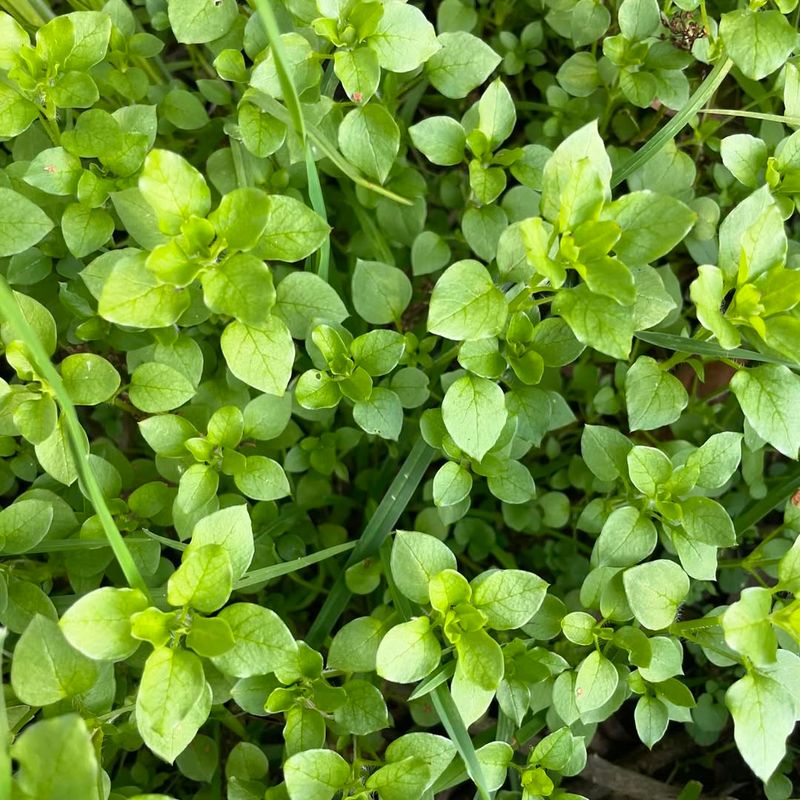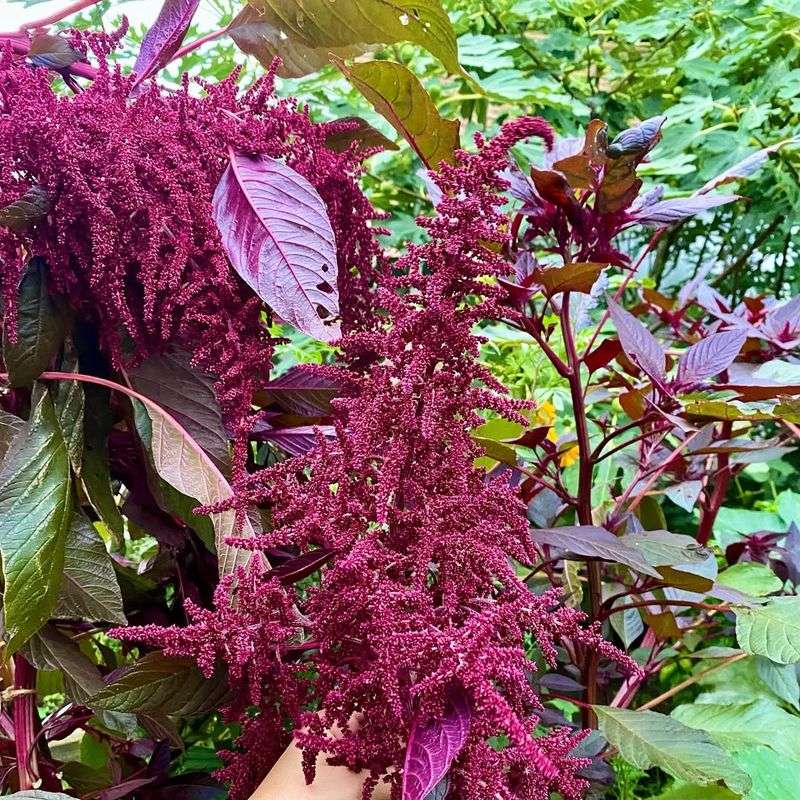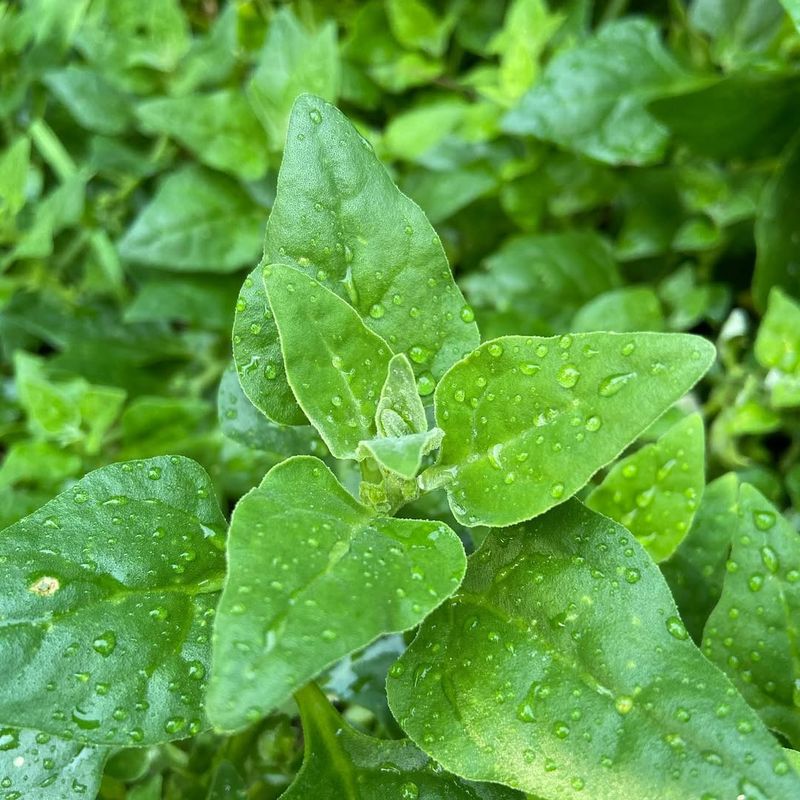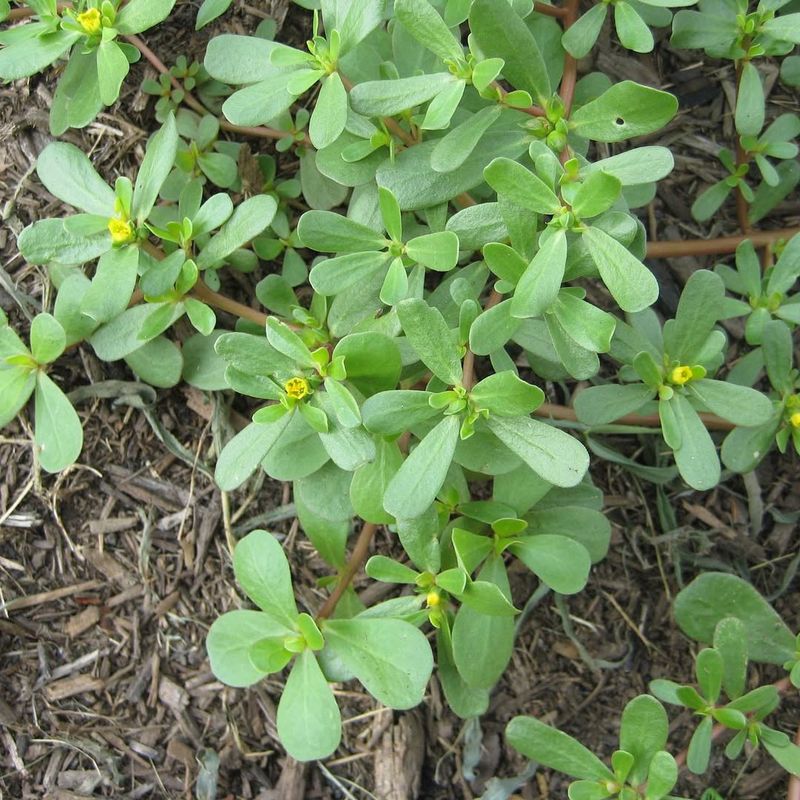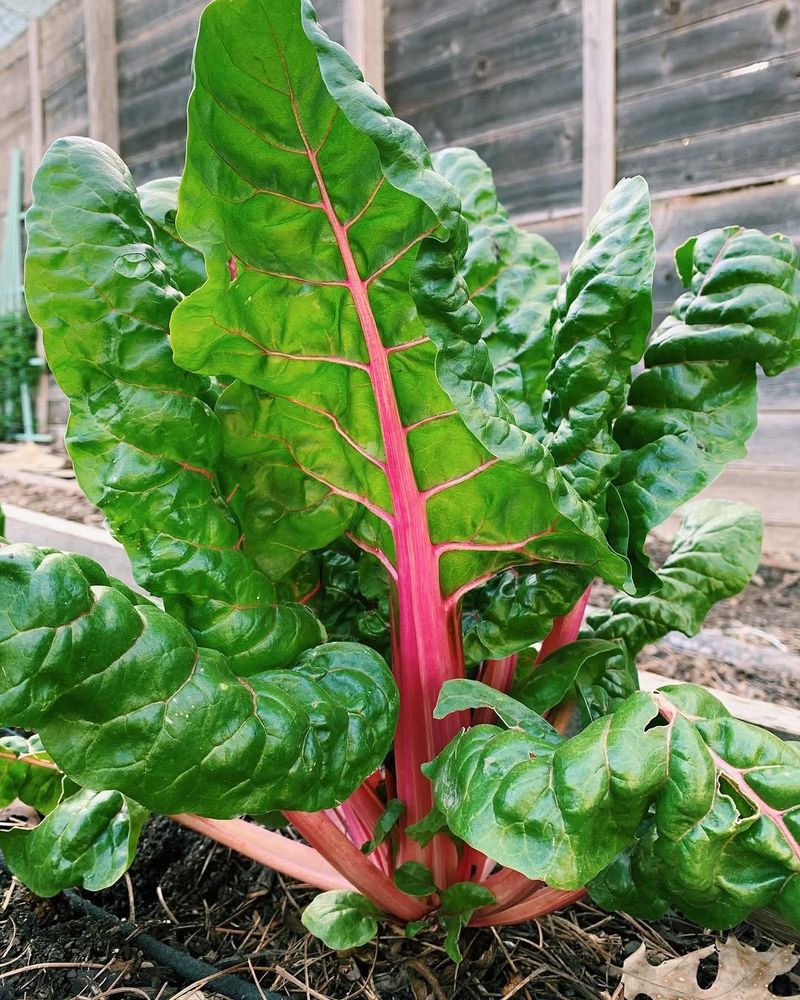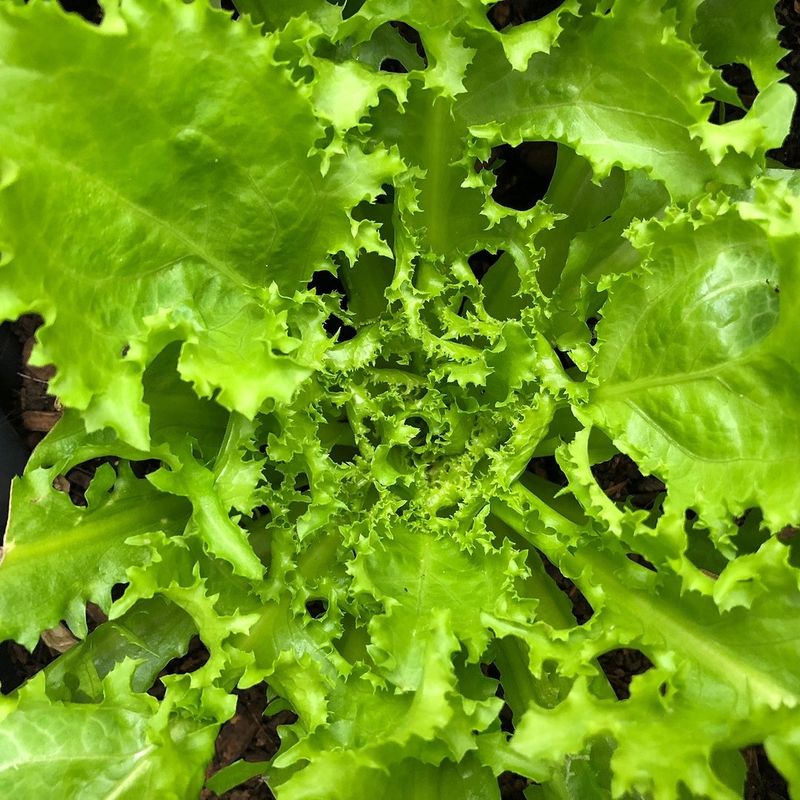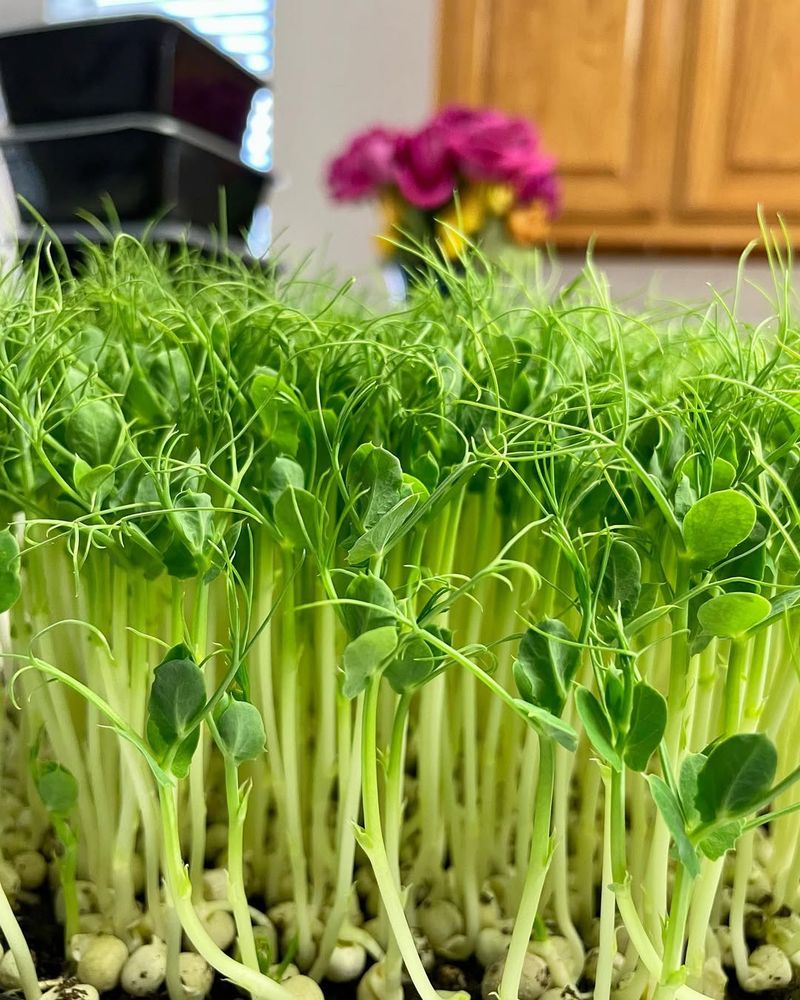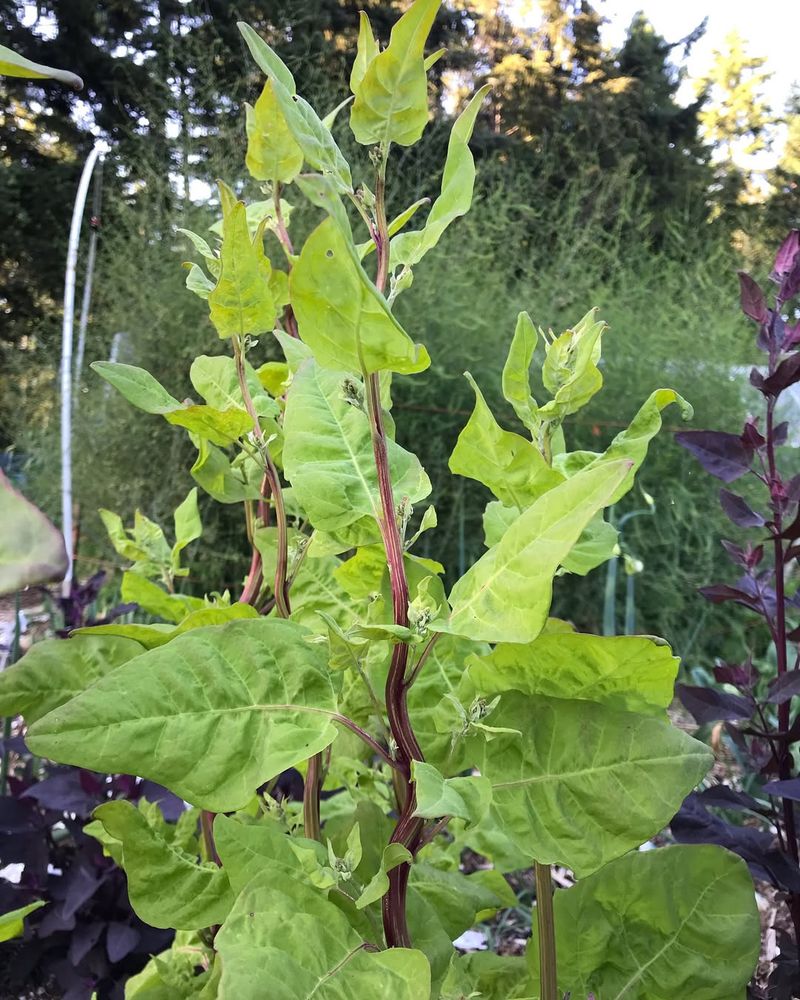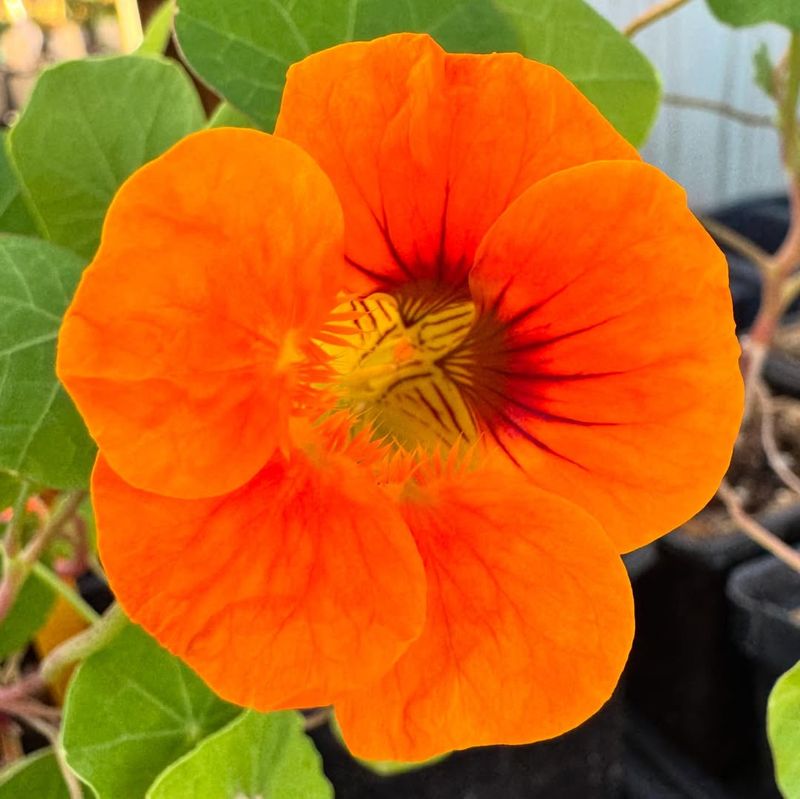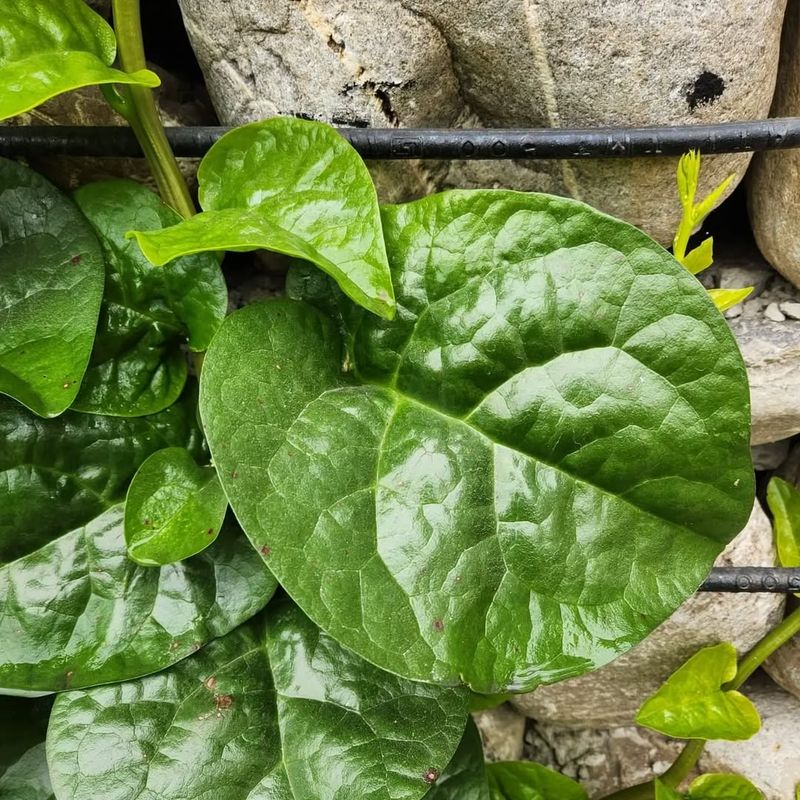A thriving garden full of fresh, leafy greens is easier to achieve than you think. Whether you’re a seasoned gardener or just getting started, these 27 vegetables offer a mix of flavor, color, and nutrition to elevate your meals.
From crisp salad greens to hearty cooking greens, this list includes both easy-to-grow favorites and powerhouse supergreens loaded with vitamins. Get ready to enjoy fresh, homegrown produce straight from your backyard while reaping the benefits of nutrient-rich, delicious greens.
1. Spinach
A vegetable that works in salads, smoothies, and cooked dishes? Spinach is the perfect match. With its tender leaves, it thrives in cool weather and grows well in both containers and garden beds, making it a versatile choice for any home gardener.
Planting is simple—just sprinkle seeds over well-drained soil. As it matures, you’ll enjoy harvests that are rich in iron and vitamins A and C. Spinach’s mild flavor pairs well with a variety of dishes. Regular watering and partial shade will keep it thriving.
2. Kale
A powerhouse of nutrients is waiting to be added to your garden. Kale, known for its robust flavor and curly leaves, is a favorite among health enthusiasts. It flourishes in cooler climates and can withstand frost. Whether you prefer it raw or cooked, kale offers versatility in the kitchen.
For planting, choose a sunny spot with rich, well-drained soil. As it grows, you’ll notice its deep green color and firm texture. Regular harvesting encourages new growth and keeps the plant productive.
3. Lettuce
A staple in salads and sandwiches, lettuce is an easy-to-grow option for gardeners of all levels. Its crisp, refreshing leaves come in a variety of colors and textures. With a preference for cooler weather, it can be planted in early spring or fall.
Simply sow seeds in rows or containers. As they sprout, thin them out to allow room for full heads to develop. Regular watering ensures tender crops. Enjoy the rewards of fresh, homegrown lettuce in your meals.
4. Arugula
A peppery addition to any meal brings excitement to the table. Arugula, with its distinctive taste, is a must-grow for salad lovers. It’s quick to mature and thrives in both garden beds and pots. Start by scattering seeds over moist soil, then lightly cover.
You’ll soon see its dark green, lobed leaves emerge. Regular watering and partial sun will keep it vibrant. Harvesting young leaves ensures a mild flavor. Letting some plants flower provides seeds for future planting.
5. Swiss Chard
A vegetable that adds a splash of color to your garden is always a welcome sight. Swiss chard, with its vibrant stems and dark green leaves, does just that. It’s tolerant of different climates and can be harvested continuously.
Begin by planting seeds in fertile, well-drained soil. As it grows, enjoy vibrant greens that are rich in vitamins K and A. Regular harvesting encourages new growth. Whether sautéed or added to soups, Swiss chard offers a delightful taste and visual appeal.
6. Collard Greens
Hailing from the South, collard greens bring a traditional taste to your garden. Known for their large, sturdy leaves, they are a staple in many cuisines. Collards grow best in cool weather but can also withstand heat.
Plant seeds in rich soil and provide ample space for growth. Regular watering and full sunlight help them flourish. As they mature, pick the leaves continuously for a prolonged harvest. Their robust flavor makes them an excellent addition to hearty dishes.
7. Cabbage
Consider a vegetable that’s both hardy and versatile. Cabbage, with its dense heads and crunchy texture, fits perfectly into many dishes. It prefers cooler climates and can be grown during spring or fall. Start by planting seeds in fertile, well-drained soil.
As it grows, watch for its tightly packed leaves forming a head. Providing consistent moisture and sunlight ensures a good crop. Harvest when heads are firm. Cabbage leaves can be used fresh, fermented, or cooked.
8. Bok Choy
A delightful addition to stir-fries and soups is within your reach. Bok choy, with its crispy stems and green leaves, is a favorite in Asian cuisine. It grows quickly and prefers cooler weather. Plant seeds in well-drained soil and ensure regular watering.
Its tender leaves and crunchy texture make it a versatile choice in the kitchen. Continuous harvesting of outer leaves keeps it productive. Bok choy’s mild flavor complements a variety of dishes and cooking methods.
9. Mustard Greens
An exciting burst of flavor can be found in your garden. Mustard greens, with their spicy taste and curly edges, add zest to any dish. They thrive in cool weather and are relatively easy to grow. Scatter seeds over prepared soil and cover lightly.
Regular watering and full sunlight will keep them healthy. As they mature, pick the leaves often to encourage new growth. Their peppery flavor is delicious both raw and cooked. Mustard greens are a lively addition to salads and sautés.
10. Romaine Lettuce
A classic choice for Caesar salads awaits in your own garden. Romaine lettuce, known for its tall heads and crunchy texture, is a staple in many kitchens. It grows well in cooler climates. Start by planting seeds in rows or containers.
Regular watering and full sunlight help romaine thrive. As it matures, harvest the outer leaves, allowing the plant to continue growing. Its crispness and mild flavor are perfect for salads, sandwiches, and wraps.
11. Endive
Welcome a touch of elegance to your plate with this exquisite vegetable. Endive, known for its tightly packed, curly leaves, offers a slightly bitter taste. It flourishes in cooler weather and requires patience to grow. Plant seeds in well-drained soil and be consistent with watering.
As the plants mature, their distinct shape and texture become apparent. Harvest when leaves are crisp. Endive can be used in salads, sautéed, or even grilled, providing a unique flavor to your meals.
12. Watercress
A nutrient-packed powerhouse is ready to invigorate your dishes. Watercress, with its small, round leaves, thrives near water sources. It’s one of the oldest known leafy greens and grows rapidly. Plant seeds in a shallow container filled with water and rich soil.
Regular replacement of water ensures optimal growth. Harvest tender leaves frequently for the best flavor. Watercress adds a peppery touch to salads, sandwiches, and soups, making it a versatile addition to any kitchen.
13. Radicchio
A unique pop of color and flavor is waiting for you. Radicchio, with its striking red leaves and slightly bitter taste, is a standout in the garden. It prefers cooler temperatures and requires care to flourish. Start seeds in nutrient-rich soil and ensure consistent watering.
As it matures, its vibrant colors become more pronounced. Harvest when heads are firm and compact. Radicchio can be grilled, roasted, or added fresh to salads, providing a delightful contrast in taste and appearance.
14. Kohlrabi
An intriguing vegetable offers both flavor and texture. Kohlrabi, with its unusual appearance and crisp taste, is a favorite among gardeners. It thrives in cool weather and can be planted in spring or fall. Plant seeds in well-drained soil, spacing them adequately for growth.
As it matures, the bulbous stem develops alongside lush leaves. Regular watering ensures a tender crop. Kohlrabi can be eaten raw or cooked, offering a mild, slightly sweet flavor similar to broccoli stems.
15. Beet Greens
A dual-purpose plant provides both root and leaf. Beet greens, with their tender leaves and vibrant red stalks, are a nutritious addition to your garden. They grow best in cooler climates and offer a quick harvest. Plant seeds in rich soil and thin seedlings for optimal growth.
As they mature, enjoy both the roots and the flavorful greens. Harvest leaves continuously for fresh additions to salads and sautés. Beet greens are rich in vitamins and minerals, making them a healthy choice.
16. Turnip Greens
A vegetable that offers more than meets the eye. Turnip greens, with their broad leaves and nutritious profile, are a staple in many traditional dishes. They thrive in cool weather and are easy to grow. Scatter seeds over well-prepared soil and cover lightly.
Regular watering and full sun ensure healthy growth. Harvest leaves frequently to enjoy their tender texture and peppery taste. Turnip greens can be sautéed, boiled, or added to soups, providing a flavorful and nutritious boost.
17. Mizuna
A delightful Asian green is ready to enhance your dishes. Mizuna, with its feathery, serrated leaves, offers a mild, peppery flavor. It’s a fast-growing crop that thrives in various conditions. Plant seeds in well-drained soil and thin seedlings as they develop.
Regular watering keeps the leaves tender and fresh. Harvest young leaves regularly for the best taste. Mizuna is perfect for salads, stir-fries, and soups, providing a subtle kick that complements other ingredients.
18. Sorrel
A tangy surprise awaits in your garden. Sorrel, with its bright green, arrow-shaped leaves, offers a unique lemony flavor. It thrives in cooler weather and can be grown in garden beds or containers. Sow seeds in fertile soil and keep well-watered.
Harvest leaves regularly to encourage new growth. Sorrel’s distinctive taste enhances salads, sauces, and soups. Its refreshing acidity pairs well with fish and poultry, making it a versatile culinary herb.
19. Tat Soi
Discover an Asian green that’s both tender and flavorful. Tat soi, with its spoon-shaped leaves, is a delightful addition to any garden. It prefers cooler temperatures and grows quickly. Plant seeds in well-drained soil and ensure consistent watering.
As it matures, enjoy its mild, mustard-like flavor. Harvest whole plants or individual leaves for continuous growth. Tat soi is excellent in salads, stir-fries, and soups, providing a gentle yet distinct taste that enhances various dishes.
20. Mâche (Corn Salad)
A soft, buttery texture is waiting for you. Mâche, also known as corn salad, features delicate, rosette-shaped leaves. It’s a cool-weather crop that can be planted in spring or fall. Sow seeds in well-drained soil, and thin seedlings as they grow.
Regular watering keeps the leaves tender. Harvest the rosettes by cutting them at the base. Mâche’s mild flavor is perfect for salads and garnishes, adding a touch of elegance to your dishes. Its subtle taste complements a variety of ingredients.
21. Chickweed
An unassuming yet valuable plant is ready to thrive. Chickweed, with its small, oval leaves, is often found in wild areas. It grows rapidly and is adaptable to various conditions. Sprinkle seeds over moist soil and keep well-watered.
As it matures, harvest young leaves for a mild, slightly sweet flavor. Chickweed is excellent in salads, sandwiches, and soups. It’s rich in vitamins and minerals, offering a nutritious boost to your meals. Its tender texture and pleasant taste make it a versatile addition.
22. Amaranth
A striking plant offers both beauty and nutrition. Amaranth, with its lush, broad leaves, is known for its vibrant colors and health benefits. It thrives in warm climates and is relatively easy to grow. Plant seeds in well-drained soil, ensuring ample sunlight.
Regular watering promotes healthy growth. Harvest leaves continuously for fresh, tender greens. Amaranth leaves can be used in salads, stir-fries, and soups, providing a slightly earthy taste. Its nutritional profile, rich in vitamins and minerals, makes it a valuable addition.
23. New Zealand Spinach
An intriguing alternative to traditional spinach awaits. New Zealand spinach, with its fleshy, triangular leaves, is heat-tolerant and thrives in coastal areas. It’s an excellent choice for summer gardens. Plant seeds in well-drained soil, and water consistently.
As it grows, enjoy its fresh, slightly salty taste. Harvest leaves regularly to encourage continuous production. New Zealand spinach is versatile in the kitchen, suitable for salads, sautés, and soups. Its resilience and flavor make it a favorite among gardeners.
24. Purslane
A succulent surprise is ready to enhance your meals. Purslane, with its succulent, oval leaves, is often considered a weed but offers delightful culinary uses. It thrives in hot, dry conditions. Scatter seeds over well-drained soil and water sparingly.
As it matures, harvest young leaves and stems for a slightly tangy flavor. Purslane is rich in omega-3 fatty acids and can be used in salads, stir-fries, and soups. Its crisp texture and refreshing taste make it a versatile addition to any dish.
25. Chard
A colorful and nutritious vegetable is ready to grace your table. Chard, with its bright stems and broad green leaves, is both beautiful and versatile. It grows well in various climates and can be harvested continuously. Plant seeds in fertile soil and ensure regular watering.
As it matures, enjoy its slightly earthy taste. Harvest leaves regularly to encourage new growth. Chard can be used in salads, sautés, and soups, providing a delightful taste and visual appeal. Its nutritional benefits make it a valuable addition to your garden.
26. Chicory
A bitter delight awaits in your garden. Chicory, with its long, serrated leaves, offers a unique flavor profile that enhances many dishes. It thrives in cooler weather and requires patience to grow. Plant seeds in well-drained soil and maintain consistent watering.
As it matures, harvest leaves for a slightly bitter taste. Chicory is excellent in salads, sautés, and soups, providing a distinctive edge. Its robust flavor pairs well with strong ingredients like cheese and nuts, making it a versatile and exciting addition to your garden.
27. Escarole
A hearty green is ready to enrich your culinary creations. Escarole, with its broad, curly leaves, offers a slightly bitter taste that’s perfect for various dishes. It grows well in cooler climates and requires moderate care. Plant seeds in fertile soil, ensuring regular watering.
As it matures, enjoy its crisp texture and robust flavor. Harvest leaves continuously for fresh additions to salads, sautés, and soups. Escarole’s versatility and distinctive taste make it a valuable addition to your garden and kitchen.
28. Pea Shoots
A delicate and delicious green is ready to elevate your dishes. Pea shoots, with their tender tendrils, are easy to grow and pack a sweet, fresh flavor. They thrive in both indoor and outdoor settings. Plant seeds in well-drained soil, providing adequate sunlight.
Regular watering ensures healthy growth. Harvest the shoots when they are about 3-4 inches tall. Pea shoots are perfect for salads, sandwiches, and garnishes, offering a fresh taste that complements many dishes. Their ease of cultivation makes them a favorite among gardeners.
29. Sorrel
A tangy surprise awaits in your garden. Sorrel, with its bright green, arrow-shaped leaves, offers a unique lemony flavor. It thrives in cooler weather and can be grown in garden beds or containers. Sow seeds in fertile soil and keep well-watered.
Harvest leaves regularly to encourage new growth. Sorrel’s distinctive taste enhances salads, sauces, and soups. Its refreshing acidity pairs well with fish and poultry, making it a versatile culinary herb.
30. Orach
A leafy vegetable with bold colors ranging from deep purple to bright green can add both beauty and variety to any garden. Orach, often called mountain spinach, thrives in cooler temperatures, making it a great choice for early spring or late fall when other greens struggle.
Rich in nutrients, Orach provides an earthy flavor that enhances soups and stews. Sow seeds directly in well-drained soil, and ensure moderate watering to keep the soil slightly moist.
31. Nasturtium
Bright, eye-catching flowers with edible leaves that pack a peppery punch make this plant a unique garden favorite. Nasturtiums are both ornamental and practical, adding flavor to salads and garnishes. Easy to grow and requiring minimal care, they’re an excellent choice for beginners looking to add beauty and taste to their garden.
These plants prefer poorer soils, which encourages better flowering and leaf production. Nasturtiums can be used as companion plants to deter pests from more vulnerable vegetables.
32. Malabar Spinach
A leafy green that flourishes in hot, humid climates and grows vertically is a game-changer for small gardens. Malabar Spinach, with its glossy, heart-shaped leaves, isn’t your typical spinach.
Its ability to thrive in tropical conditions makes it a top choice for gardeners in warmer regions looking for a resilient and space-saving plant. This vine-like plant offers a slightly tangy taste, adding a refreshing twist to salads and stir-fries. Plant it near a trellis or a vertical structure to maximize its growth potential.

